In this episode of Conservation Ag Update, we pay tribute to no-till legend Dave Brandt, who recently passed away from injuries sustained in a car crash. Fellow no-till legends who knew Dave best share their thoughts on the life and legacy of their friend.
The episode also features an update on No-Till Innovator Ray McCormick, who’s in the hospital recovering from a near-fatal accident on his farm. McCormick talks about the experience in an exclusive interview with Mike Lessiter.
Plus —Illinois farmer/precision specialist Bruce West predicts the next big trend in precision agriculture, Ohio no-tiller and broadcaster Dusty Sonnenberg shares his big takeaways from a year’s worth of farm visits, assistant editor Mackane Vogel shows how cover crops and narrow rows help with weed suppression in soybeans and more!
This episode of Conservation Ag Update is brought to you by Saddle Butte Ag Bio Till Cover Crops.
Bio Till Cover Crops, a pioneer and leader in cover crop seeds, represents a complete lineup of seeds suitable for use in diverse soil types and growing conditions. Our focus on cover crop and regenerative forage seeds sets us apart from suppliers invested in other markets. Bio Till Cover Crops is dedicated to the expansion of the cover crop market by offering a superior, proven product matched with agronomic support from our outstanding team at a fair and competitive price point.
TRANSCRIPT
Jump to a section or scroll for the full episode...
- No-Till Community Reflects on Life & Legacy of Dave Brandt
- No-Till Legend Ray McCormick Survives Near-Fatal Accident
- Cover Crops & Narrow Rows Help with Weed Suppression in Soybeans
- Farmer Feature: Dusty Sonnenberg, Hamler, Ohio
- Ahead of the Curve: Day in the Cab with West Enterprises
- Picture of the Week: Caleb Traugh’s Field Day
- Dave Brandt’s Last No-Till Farmer Interview
No-Till Community Reflects on Life & Legacy of Dave Brandt
The regenerative farming community continues to honor the life and legacy of no-till legend Dave Brandt, who passed away May 21st from injuries sustained in a car crash.
The Carroll, Ohio, native is remembered for the enormous impact he had in the no-till world and beyond, while sharing his wealth of knowledge at countless events across the country. He imported the first known no-till drill into the U.S. in 1975 — a Moore seeder from Ireland.
Many call him the Godfather of Cover Crops. Brandt once said, “When I planted my first cover crop — cereal rye — in 1978 to control erosion…I had no idea what the full ramifications of that decision would be.” Fellow no-till legends who knew Dave best share their thoughts on the life and legacy of their friend.
“He was a big proponent of education. I conducted a few conferences in my time. I always invited Dave Brandt to speak. If he was available, he’d be there speaking and sharing his knowledge. Dave Brandt has left a legacy. He will not be forgotten.”
– Randall Reeder, No-Till Innovator
“He was always smiling. He was great on laughs and jokes. Incidentally the other day I went into our grower websites and typed in the word Brandt, and he shows up in 186 different articles that we’ve done for either No-Till Farmer, Strip-Till Farmer or Cover Crop Strategies. He was named a No-Till Innovator in 2015 and was well deserving of that award. Anybody who’s been no-tilling in Ohio or cover cropping across the country — he was the guy who really made it work.”
– Frank Lessiter, Founder and Editor, No-Till Farmer
“People wanted to follow him, they wanted to come to his farm, they wanted to hear him speak, they wanted to have him come speak. And part of that is he made this sacrifice over and over and over again to go to those places, to go to those farms, to go to those people, to go to Europe, to do as much as he could and make all those sacrifices, because this is so important to the future of not only our country, but of the world. And he gets a lot of responsibility for that. I say he’s still here, because the impacts of all he did is his legacy. So, he’s everywhere around us because all of these great things he did surround us and he’s still here. So good job, Dave.”
– Ray McCormick, No-Till Innovator
No-Till Legend Ray McCormick Survives Near-Fatal Accident
You may have noticed no-till legend Ray McCormick there in the hospital — he’s recovering from an accident with his trackhoe that nearly killed him.
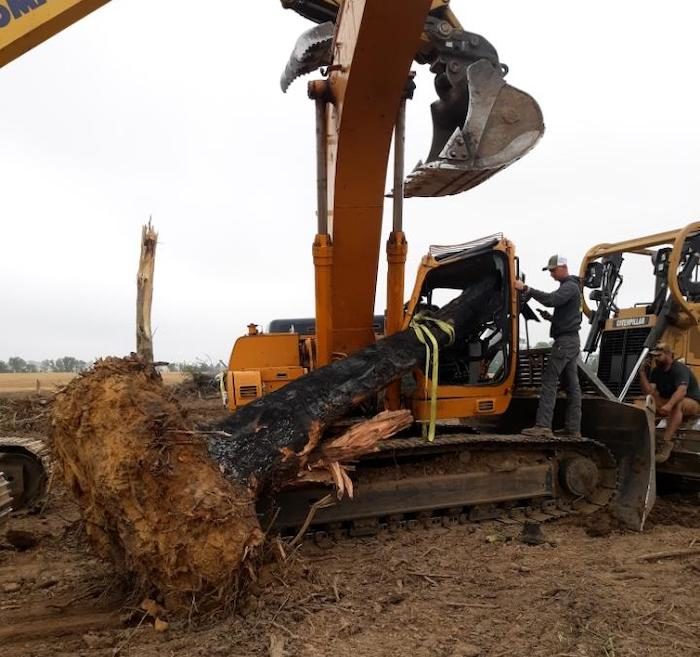
He was doing tornado cleanup on his Illinois farm when a tree broke through the windshield, got trapped on the levers and pushed against his body, crushing his leg. A friend, working hundreds of yards away came to the rescue and saved his life. Our Mike Lessiter and Kim Schmidt visited McCormick in the hospital. He was able to walk on crutches for the first time in 10 days and says he’s lucky to be alive.
“I thought I never had a chance of surviving. I accepted that and lo and behold, it pushed me out the back and then settled on my leg. And off across the field we go with the track hoe driving and the log on top of me. Because of some skilled work with a man with a bulldozer, he was able to get out in front of me and circle around and get in front of my tracks and get me stopped and shut the machine off. Then he was able to get some ratchet straps... he didn’t have any big chains or anything... and he was able to carefully get that log off the top of me, and here I sit very happy to be alive.”
Cover Crops & Narrow Rows Help with Weed Suppression in Soybeans
Narrow rows and cover crops might prove to be effective for weed suppression in soybeans, according to two new research studies shared by integrated weed management publication GROW.
In one newly published study from Michigan State University, Justine Fisher, now an agronomist at Syngenta Crop Protection, concludes that either a cereal rye cover crop or narrow soybean rows can significantly suppress the number and size of herbicide-resistant marestail. The MSU study also shows that combining both practices could give farmers some breathing room during poor spring weather, by holding marestail flushes at bay until fields were ready for postemergence herbicide applications.
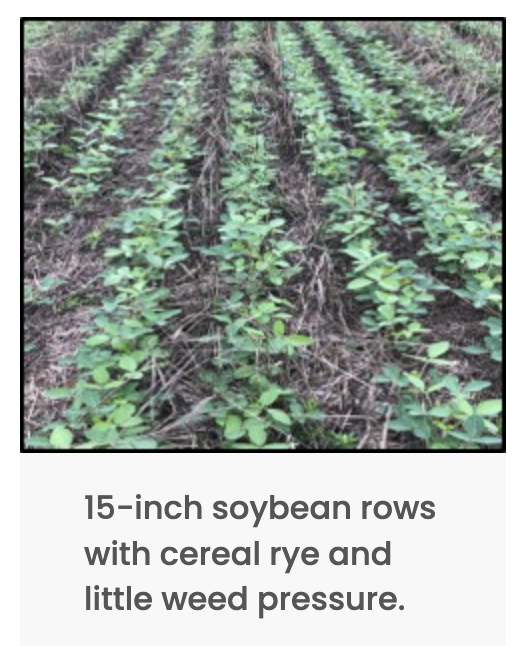 |
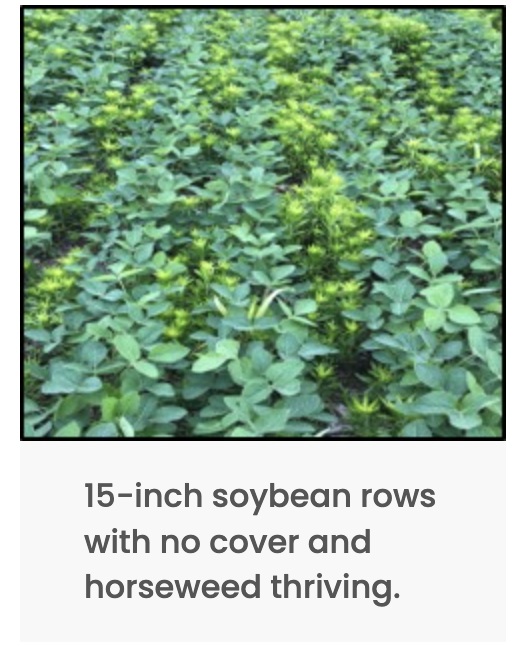 |
The image on the left shows 15-inch soybean rows with cereal rye and very little weed pressure, while the image on the right shows 15-inch soybean rows with no cover crop and lots of horseweed thriving.
Overall, the study found these two management practices worked best early in the season, shrinking horseweed density by 90% in plots planted green with narrow rows.
This new info could be a gamechanger for farmers trying to navigate the short, unreliable spray windows of spring and early summer, according to Fisher.
In a separate study from Iowa State University which combined cover crops, narrow row soybeans and year-over-year weed control, Ram Yadav, a research associate at Iowa State University, found that the three strategies used in unison reduced waterhemp biomass by 80%.

The top left image shows no cover crop in 30-inch soybeans, compared to the top right which shows soybeans in 30-inch rows with a rye cover crop. The bottom left shows no cover crop, but this time in more narrow, 15-inch rows, and finally, the bottom right shows a nearly weedless soybean field planted in 15-inch rows with a rye cover crop. Yadav concluded that combining all three of these strategies could reduce waterhemp biomass by 80% and seed production by 85% at the time of soybean harvest.
And if you’d like to read more from either of these two studies, they can be found at growiwm.org.
Farmer Feature: Dusty Sonnenberg, Hamler, Ohio
Our farmer feature takes us to Northwest Ohio now, where Dusty Sonnenberg runs a dairy operation, no-tills soybeans, wheat, alfalfa and strip-tills corn.

When he’s not running his Tye no-till drill, he’s busy traveling across the Buckeye State as a broadcaster for the Ohio Ag Network. He’s seen a lot over the past year. Some of his biggest takeaways include the increased use of biologicals, micronutrients, multiple nitrogen applications throughout critical N uptake periods, and even drones for seeding cover crops. Dusty also learned about one big thing preventing more farmers from using cover crops.
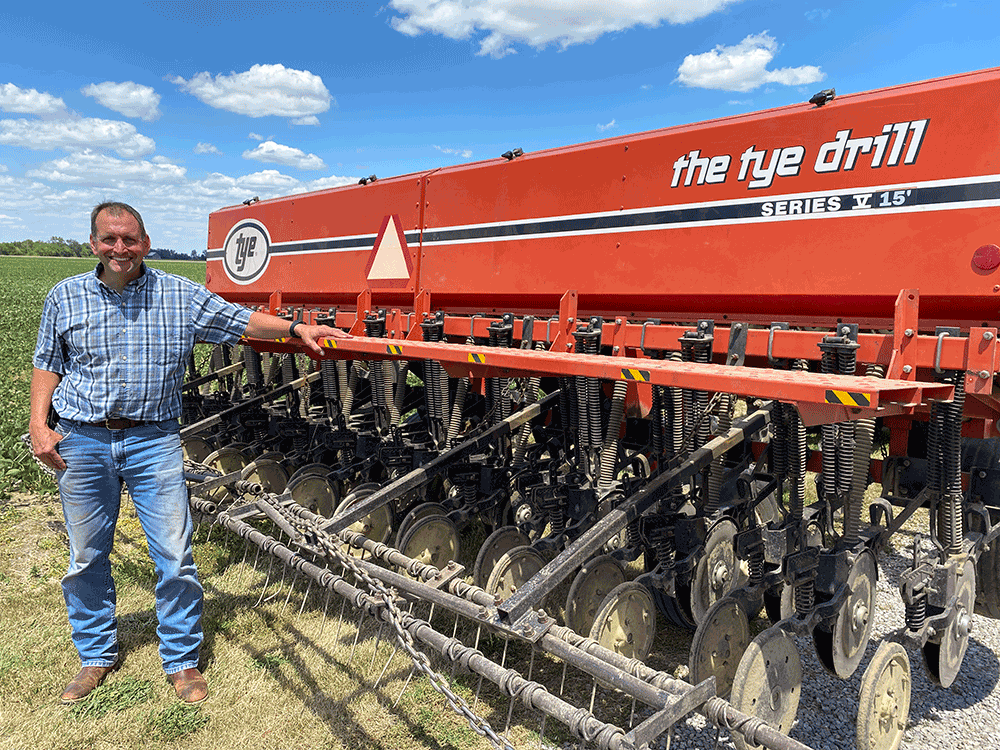
“I know for some folks, just the cost of the seed has been a deterrent. Cover crop seed is sometimes difficult to find. It's in short supply if the demand is high, and it's not cheap. So, it's sometimes hard to swallow that pill that I'm paying for seed to put out there that I know I am not going to get an immediate return on that investment.”
Day in the Cab: West Enterprises
Time now to visit with another guy who’s pulling double duty. Bruce West not only runs his own farm, but he also owns and operates an independent precision hardware and software dealership in western Illinois.
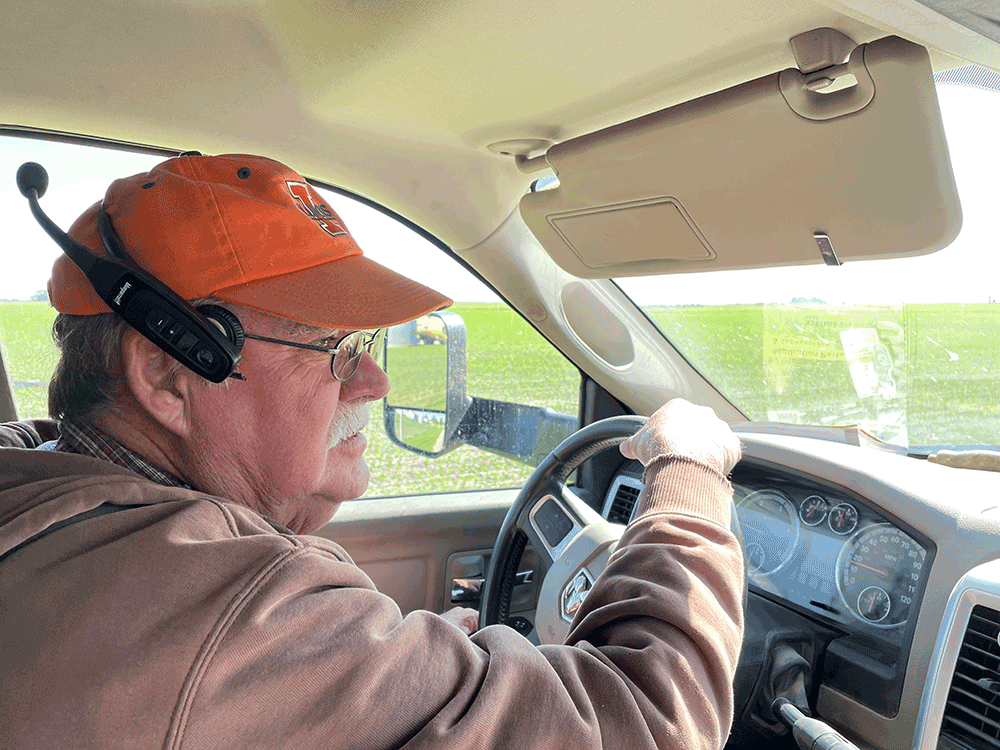
Let’s go behind the scenes at West Enterprises, where Bruce drives an average of 250 miles a day visiting customers across the state. Here’s what his most recent Friday morning looked like.
Stop number one: An organic farm, to check out this new Treffler precision tine harrow, killing weeds after soybean planting. The machine allows the tines to adapt individually to unevenness in the soil.
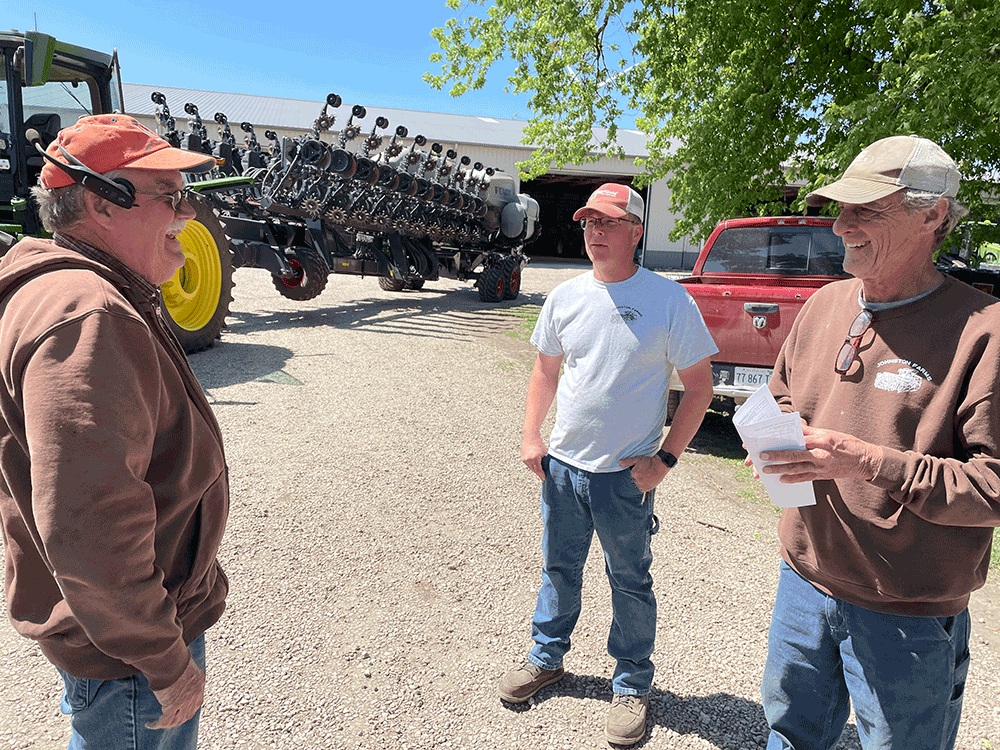
Next up — it’s a trip to some longtime strip-till customers, who are interested in adding speed tubes to their planter. Bruce checks out their setup and sees what they need so he can build a quote for the order.
Then after a quick stop at Subway…he visits a no-tilling father-son duo, to make sure everything’s going smoothly with their new Ag Leader Right Spot sprayer technology. Bruce is always trying to stay ahead of the curve — I asked him what the next big thing in precision ag will be.
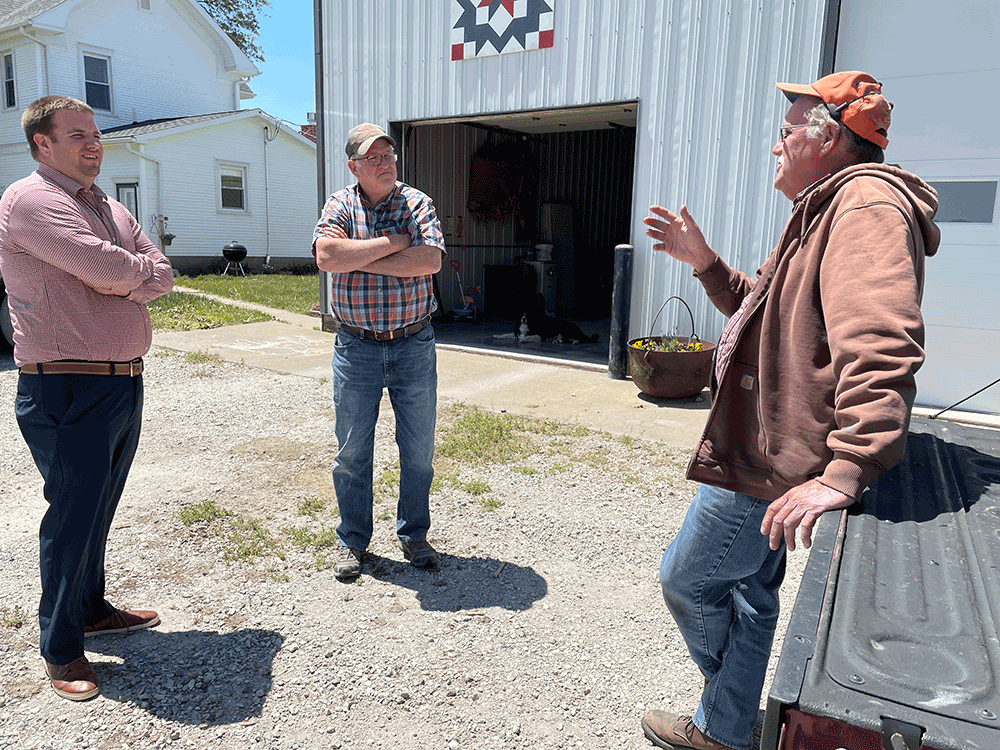
“We all talk about autonomy, whether it’s the individual tractor or swarm technology, that’s the thing we’re talking about. But that’s still probably 5-10 years away. We’re looking at some things in the interim. Right now it appears to me the optical related items are the next big thing. I also feel that mainstream is going to mean more of the pulse and sprayer type products, using PWM technology for nozzles to control droplet size and improve accuracy of coverage. That’s going to be more of a mainstream thing in the next 1-3 years.”
Picture of the Week: Caleb Traugh’s Field Day
Our pictures of the week come to us from 26-year old strip-tiller Caleb Traugh, who’s summer field day is really taking on a life of its own.

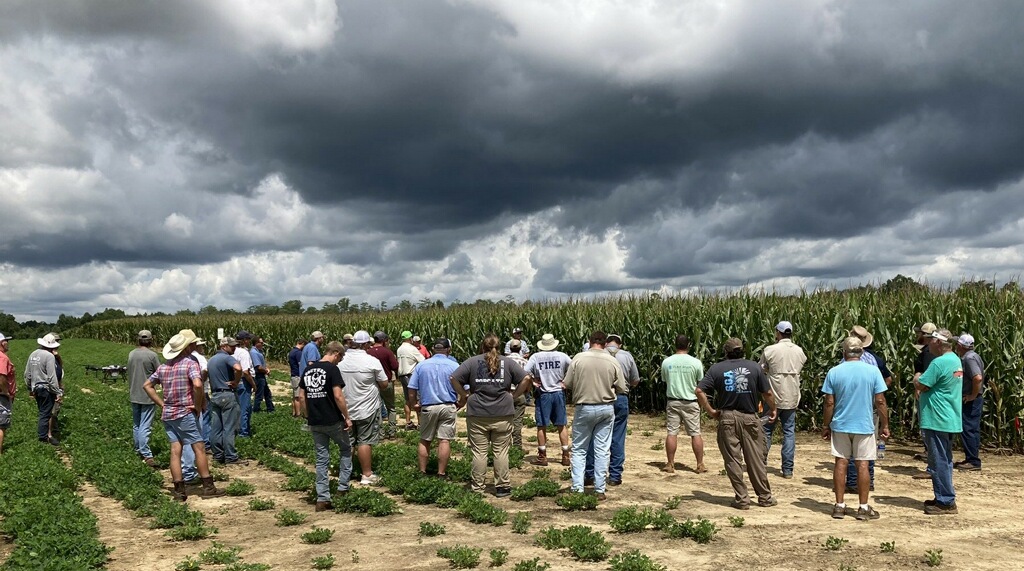
Here’s some photos from his most recent one. Farmers from all over flock to the southwest corner of Georgia to check out Caleb’s research plots. He says he conducted 200 trials in 2022 alone. The Blakely, Georgia native placed second in the 2021 NCGA Corn Yield Contest with just over 270 bushels per acre in the strip-till category. Amazing accomplishment considering he didn’t grow up on a farm or study it in college.
Dave Brandt’s Last No-Till Farmer Interview
And as we say goodbye, we leave you with some final words from Dave Brandt. No-Till Farmer managing editor Michaela Paukner sat down with him in February, just a few months before he passed away.
“I guess to me it's real humbling to have people you work with or your peers acknowledge what you've done because I feel I just plant the seed. We do a lot of talking, we do a lot of field days, and my point of call is to get the people we're working with or the producers to think outside the norm. You don't have to be hard up to change. You just have to be able to adapt to what you're trying to do.
“But I just like to talk and plant the seed and then when people call you to help, I want to help them. I shouldn't even be here. I should be home trying to help the grandkids get things done, but I'm so excited about trying to help people that I'll spend a lot of time away from home. And it's a lot easier now, with two grandsons on the farm, to get away. It was fun when I had a mate to go with me, but it's not as much fun as it used to be that way. It's always fun to have somebody navigate you, and you holler at them because they made the wrong turn.”
Have an interesting photo or video from your farm? Or a story you’d like us to feature on the broadcast? Send me an email at Nnewman@lesspub.com.
And that will wrap things up this edition of Conservation Ag Update. Until next time, for more stories visit no-tillfarmer.com, striptillfarmer.com and covercropstrategies.com. Thanks for stopping by. Have a great day!

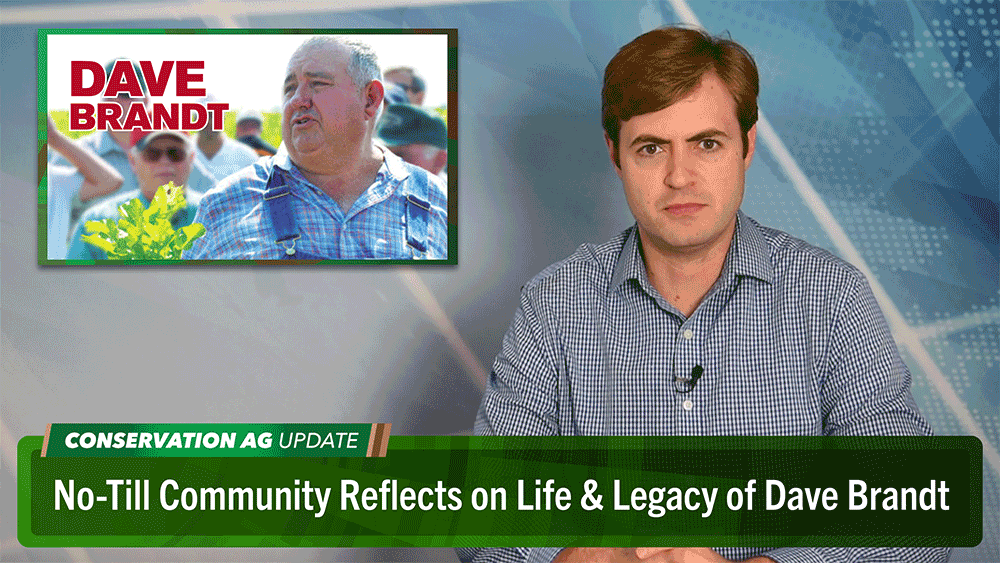



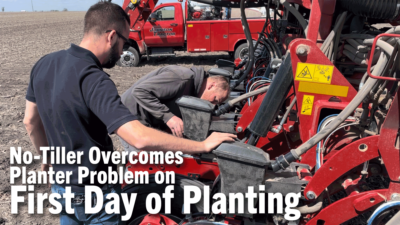



Post a comment
Report Abusive Comment